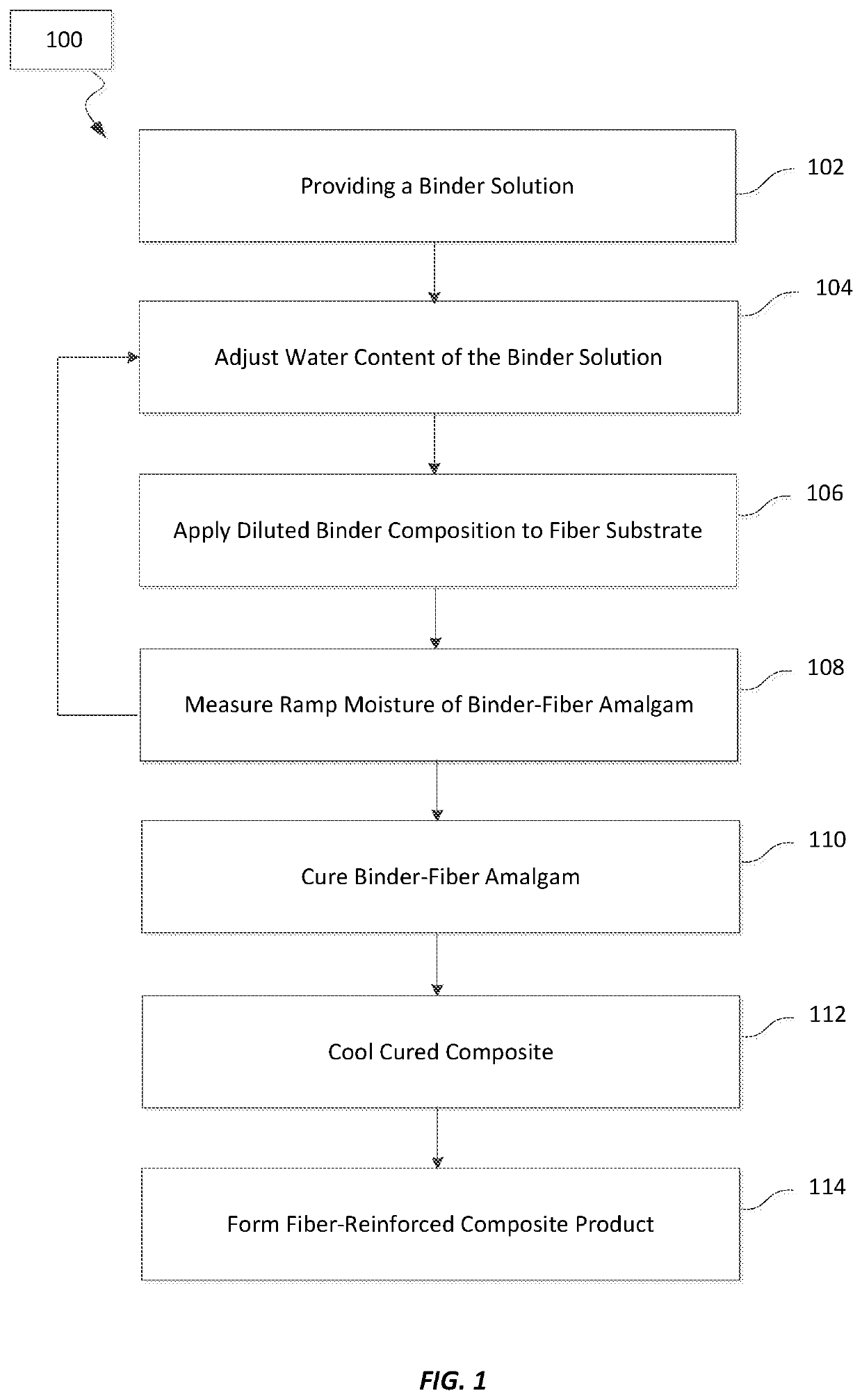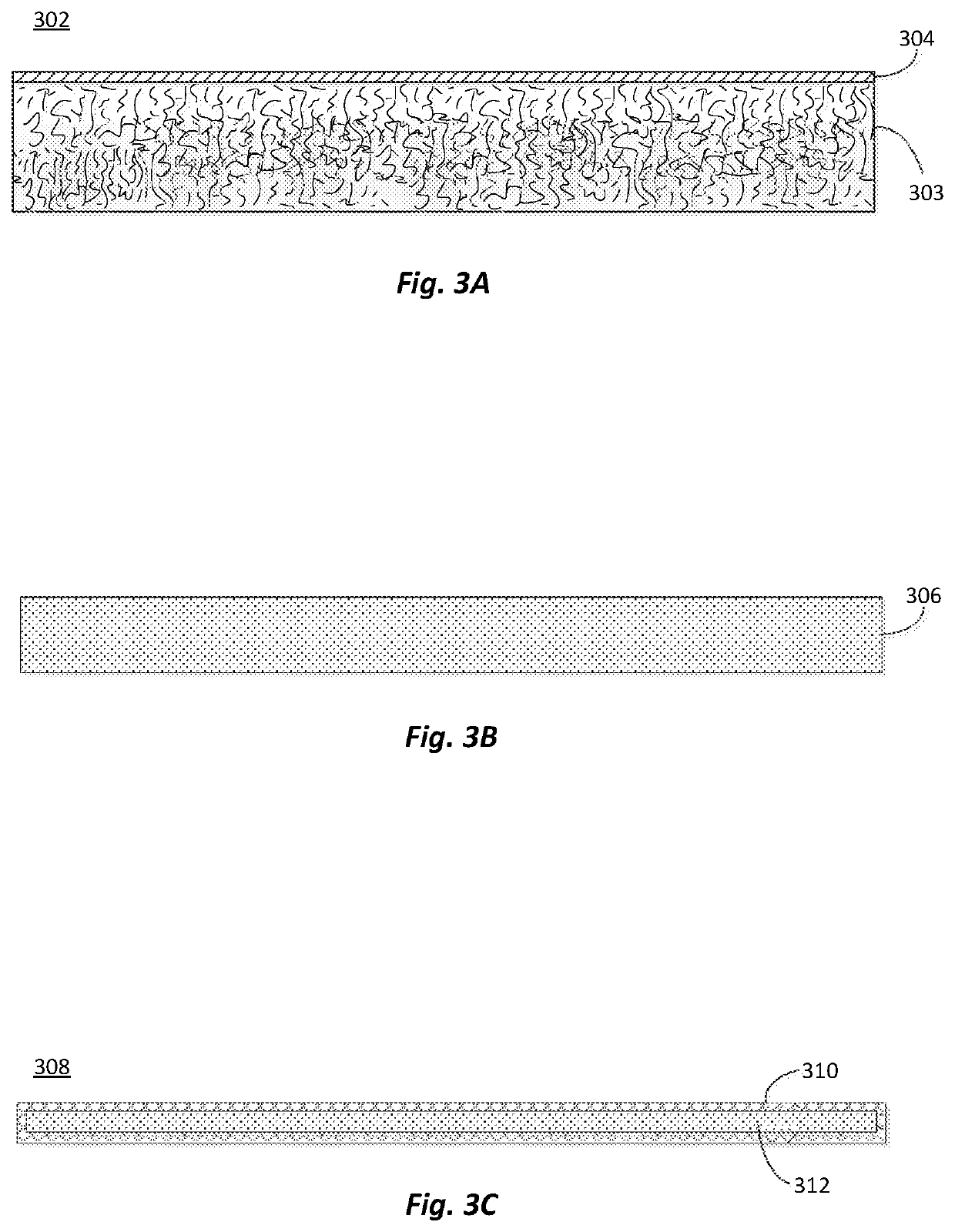Starch and carboxylic acid binder compositions and articles made therewith
a technology of starch and carboxylic acid, which is applied in the direction of heat-proofing, polycarboxylic acid ester polymer adhesives, adhesive types, etc., can solve the problems of reducing the rigidity of the composite, reducing the resistance to moisture, and affecting the properties of the composite, so as to reduce the time it takes, accelerate the reaction rate, and improve the mechanical properties
- Summary
- Abstract
- Description
- Claims
- Application Information
AI Technical Summary
Benefits of technology
Problems solved by technology
Method used
Image
Examples
examples
[0104]In a first set of experiments, evaluations were conducted on the effects of carbohydrate size on the unaged and aged tensile strength of a cured binder. The binders were made from binder compositions that included the carbohydrate (or repeating carbohydrate unit in the case of maltodextrin and the starches) and citric acid in a 1:1 molar ratio. The tensile strengths of the binders were measured with a dogbone strength test method that was conducted according to the description below.
[0105]Samples of binder composition weighing 80 g and having a 50 wt. % solids level are mixed with 1000 g of glass beads (borosilicate glass with average diameter of 1.0 mm) to make uncured composites. An one ounce sample of the uncured composite is spread into dogbone molds and pressed in the mold at a pressure of about 5,000 psi (at room temperature of 23° C.). The dogbone sample is then released from the mold and heated at about 400° F. for about 20 minutes to form cured dogbone composites. The...
PUM
| Property | Measurement | Unit |
|---|---|---|
| weight average molecular weight | aaaaa | aaaaa |
| weight average molecular weight | aaaaa | aaaaa |
| wt. % | aaaaa | aaaaa |
Abstract
Description
Claims
Application Information
 Login to View More
Login to View More - R&D
- Intellectual Property
- Life Sciences
- Materials
- Tech Scout
- Unparalleled Data Quality
- Higher Quality Content
- 60% Fewer Hallucinations
Browse by: Latest US Patents, China's latest patents, Technical Efficacy Thesaurus, Application Domain, Technology Topic, Popular Technical Reports.
© 2025 PatSnap. All rights reserved.Legal|Privacy policy|Modern Slavery Act Transparency Statement|Sitemap|About US| Contact US: help@patsnap.com



